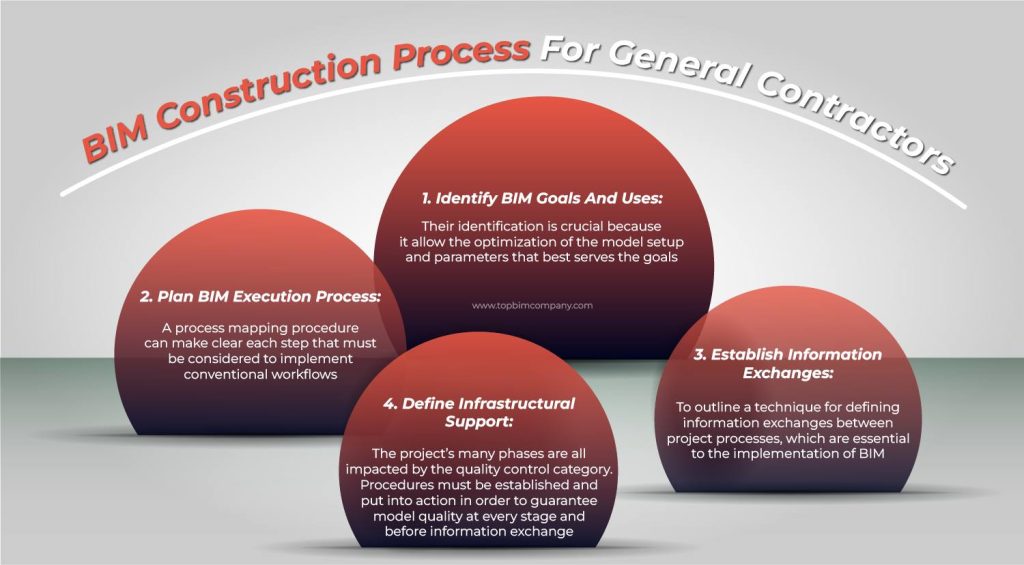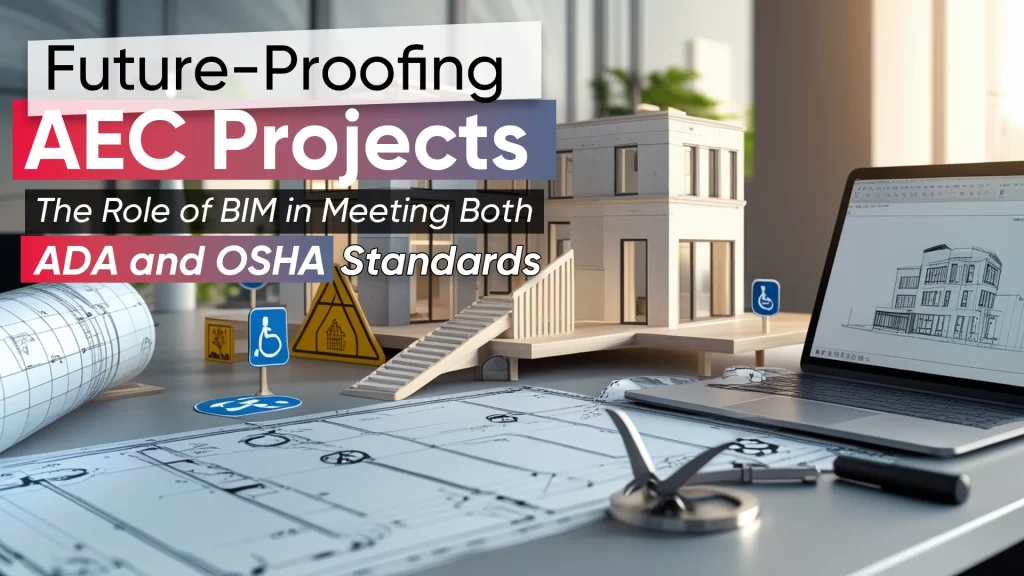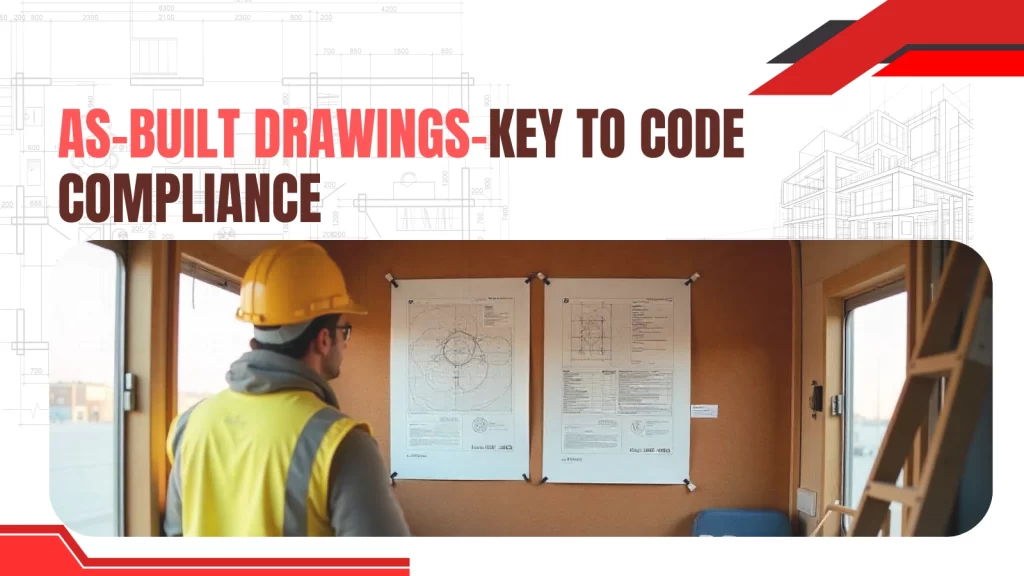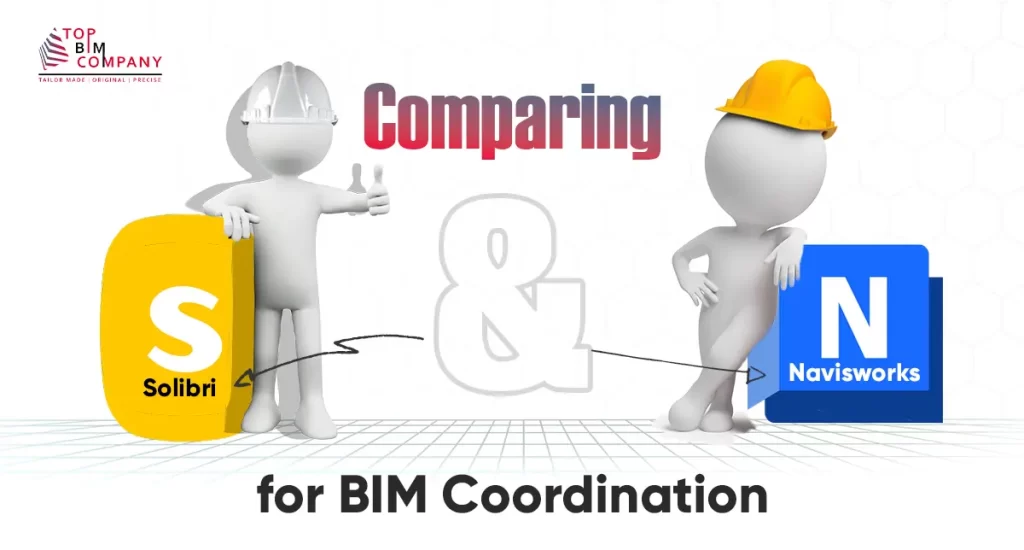BIM Management- Building Construction Process For General Contractors
- Home
- Blog

Building information modeling in construction Management
Building information management, building information modeling, and BIM are acronyms for each other. The BIM component is as significant as the ‘Building Information Modeling‘ or ‘Model’ dimension, which is how most experts will refer to it.
Table of Contents
ToggleChoose BIM for Project Management and get a design collaboration solution that is smarter and flexible for AEC Teams.
The process of BIM management uses digital building, construction, or infrastructure models to improve collaboration among diverse building partners and stakeholders in infrastructure projects.
A digital 3D building model referred to as “the model” by BIM is made available to all participants in a project where Building Information Modeling is used by various applications, technologies, workflows, and procedures in a managed, optimized, and predefined manner. It is a digital depiction of the building that connects geometry and data.
What does BIM provide to general contractors?
For both new constructions and renovations, the ability of construction businesses to manage the digital interoperability between stakeholders and technicians is essential. BIM management provides general contractors, as well as the associated supply chains and subcontractors, with a methodological and operational procedure.
The Program includes guidelines for the creation of BIM Modeling based workflows that implement the primary tasks involved in building construction, operations, and maintenance, including off-site and on-site time schedules, site planning, and building ergonomics. It also includes information on project variances, non-compliance issues, test and commissioning, and maintenance planning.
Operators in asset management, space planning, and maintenance scheduling can use important information gathered to improve the overall performance of the facility or a portfolio of facilities.
However, there are instances where a company’s technical operators—hereafter referred to as the “team” failed to properly prepare the adoption of BIM, leading to higher modeling service prices, timetable delays because of missing data, and little to no gain.
To ensure that the project team members are able to derive value from the model data that is now accessible, BIM management involves careful planning and fundamental process improvements.

Companies involved in construction and asset management should create a thorough execution strategy to integrate Building Information Modeling into the project delivery process. The Department of Architecture, Built Environment and Construction Engineering has created a Protocol that outlines the overall vision as well as implementation details for construction and operations as part of the activities of a research contract with Pessina Costruzioni SpA, an Italian General Contractor specialized in the construction and operation of healthcare facilities.
This Protocol provides a methodical approach for creating and implementing a corporate BIM Project Execution Plan that addresses the core business processes of the organization.
The development of the infrastructure in the form of contracts, communication protocols, technology, and quality control to support the implementation includes:
- Identifying BIM goals during project planning, design, construction & operational phases
- Designing a tailored BIM execution process by creating process maps
- Defining BIM deliverables in the form of information exchanges
- Defining the BIM deliverables
Identify BIM Goals and Uses
The definition of the project’s uses in relation to the primary contractor’s activities is the first significant phase in the process preparation. Their identification is crucial because it enabled the definition of the ultimate goals, accurate model setup, and identification of the parameters that allow the optimization of the scenario that best serves the goals. All subsequent modeling work can be rendered useless by incorrectly establishing the requirements.
A number of macro-categories specify the criteria to evaluate projects, including the budget, the technical-construction feasibility, the internal distribution, and the energy performances, in accordance with a typically top-down decision-making procedure. The team works closely together to define these, and there are briefings with suppliers and subcontractors involved as well.
The specific BIM uses for the project can be determined once the team has specified quantifiable goals from both a project and company standpoint. The Protocol offers a list of typical applications that have been determined by examination of project case studies, discussions with industry leaders, and literature reviews. Each usage on a project is a distinct task or process that can gain from having BIM included into it. Although the list is not exhaustive, it gives a good idea of the potential applications of BIM in the building industry. Design documentation, 4D BIM Simulation, cost analysis, space management, and record modeling are all included.
The contractor’s team must decide which appropriate BIM applications to utilize first and prioritize those that would help the project achieve its objectives.
A BIM Worksheet template has a list of prospective uses, fields to review the value, responsible party, capabilities, extra remarks, and the team’s decision on whether to adopt the BIM use, all of which help to streamline the BIM use review process.
Design BIM Execution Process
After the team has determined the BIM applications, a process mapping procedure can make clear each step that must be considered to implement conventional workflows. All team members may readily grasp how their work processes connect with those of other team members by first viewing a high-level map of the sequencing and interactions between the project’s main BIM applications.
Team members who are responsible for each specific BIM use should choose or create additional detailed process maps after the high-level map has been created. For instance, the high-level map will demonstrate the order and connections between energy evaluation, cost estimation, 4D modeling, and recording. A thorough map will demonstrate the specific procedures that the general contractor is capable of carrying out independently or, in certain situations, with the assistance of consultants from other companies like designers, subcontractors, or, as may be the case for an energy work, LEED certifiers.
The responsible parties involved in the workflow should be clearly identified on the maps depicting each process. This task may be simple for some processes but not for others. In every situation, it’s crucial to think about which team member is most qualified to carry out the assignment successfully. In some processes, there may be numerous liable parties. The designated party will be in charge of precisely specifying both the information needed to carry out the procedure and the information generated by it.
Each process inside the BIM overview maps should include the process name, project phase, and the responsible party according to the graphical notation and information format. The title of the process’s detailed map should be included for each process. Since multiple processes may share the same detailed map, this notation for the detailed map is required. For instance, a construction management company might estimate costs using the building data that the designer has provided. The construction manager may complete this estimate during the schematic design, design development, and construction document phases. However, it may use the same detailed workflow to complete this task, which can be represented in a single detailed map, obviously with different BIM LOD Models, reference documents, and templates.
Improve project efficiency by consulting with BIM experts
Our BIM Professionals will provide a customized solution & cost estimation for your project.
Establish Information Exchanges
This objective is to outline a technique for defining information exchanges between project processes, which are essential to the implementation of BIM. The team must comprehend what data is required to deliver each BIM use in order to define these exchanges. An Information Exchange Worksheet template has been created to help with this task. After defining and outlining the BIM management process, the Contractors should complete the Information Exchange Worksheets early in a project.
The defining of the information level through BIM parameters transfers project objectives to the digital models in accordance with Standard UNI 11337:2017 (Building and civil engineering work Digital management of the informative processes). It is crucial that the team members, and in particular the author designers, subcontractors, etc., and the receiver of the team understand the information content for each information exchange transaction.
The following details should be recorded to define each information exchange:
- Model Receiver: List every member of the project team who will be receiving the data for a future BIM application. The Input Exchanges must be completed by these parties.
- Model File Type: Specify each BIM use that can be connected to the project’s Level of Geometry (LOG). The job also specifies the particular software programs, their versions, and the file types that were utilized by the recipient to modify the model during each BIM use. This is important to know in order to spot any potential interoperability between exchanges.
- Information: Pinpoint just the details required for the BIM deployment. The information parameters corresponding to building elements and components are organized by predefined property sets (P-Sets). Depending on the Level of Information (LOI) required for each BIM usage, the parameter list can change. The diverse abilities of designers and technicians involved in the construction process can be interpolated at the correct BIM maturity level. It will be feasible to locate and resolve overlaps as well as process interferences between various operators and designers by exchanging the P-sets in a common data environment (CDE).
Define Infrastructural Support
The identification and definition of the project infrastructure needed to successfully execute BIM as intended is the last phase of the protocol. The BIM project execution process is supported by six particular categories. The categories that have been chosen are Tender, Procurement, Construction, Recording, Asset Management, and Quality Control after a thorough study of the literature research with industry stakeholders and operators.
Project-specific information for each category can vary greatly, therefore the description’s objective is to spark conversation and highlight the issues and choices that the project team must make. The team has been provided with templates for Employer’s Information Requirements (EIR) and BIM Execution Plans (Pre-contract and Post-contract).
The project’s many phases are all impacted by the quality control category. Procedures must be established and put into action in order to guarantee model quality at every stage and before information exchanges. Every BIM Process that is engaged throughout the course of the project must be prepared in advance, taking into account the model’s content, level of detail, format, and party in charge of updates, as well as the distribution of the model and data to different parties. Each party involved in the model has a designated individual who is in charge of coordinating the model and taking part in all significant BIM activities. He is in charge of resolving any problems that may come up with keeping the model and data complete, accurate, and up to date.
Separate discipline models were developed at various levels of development. In the beginning, LOD 100 volumetric models of conceptual masses are produced which helped distributive analysis of three different design possibilities and the validation of the internal distribution specification. Then, discipline models with LOD 200 that reflected the design choice that was better in line with the health standards were realized.
Adopt BIM Management for General Contractors
While choosing the appropriate areas and levels of detail required in the information modeling processes, it is always important to take into account the current technology, training, and costs of implementation compared to real benefits. Building Information Modeling can be implemented at specific phases throughout a project.
Teams should establish the precise implementation regions and uses rather than focusing on whether or not to adopt BIM generally. While minimizing the cost and impact of the modeling deployment, a team should strive to adopt BIM at the level required to maximize value. To do this, the team must carefully choose which areas are suitable for the deployment of BIM and then carefully design these areas. To seek BIM management for general contractors, get in touch with our BIM professionals.
Our Services
Latest Post
Get A Free Quote
BIM Construction is the Future
Building information modeling (BIM) is the future of building design and construction. Get in touch with our BIM Experts.





